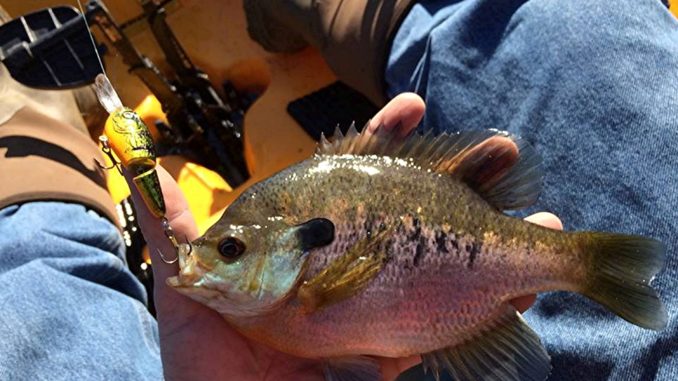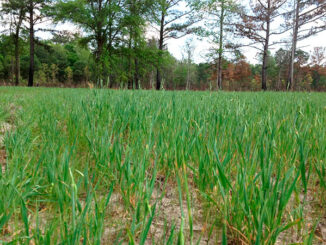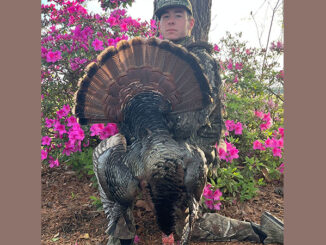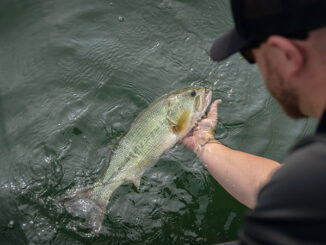
Kayaks, canoes can get you in tight with spawning sunfish
Walk into a restaurant across most of the Carolinas, ask for a Coke, and you might be asked “What kind of Coke?”
The same principle applies to bream. Southern anglers use the colloquialism to cover a variety of hard-fighting, good- tasting panfish that spawn around the full-moon cycle starting in late April and running through the summer.
The term “bream” often includes a variety of sunfish: bluegill, shellcracker, pumpkinseed, redbreast, warmouth and even fliers. The line is drawn at crappie, because although crappie are panfish, you’ll have to ask for them by name — because you don’t ask for a Coke if you really want a Cheerwine.
The best way to fish for any bream species is from a kayak. Old timers may argue that an old, beat-up john boat is the best bream-catching machine ever made, but as soon as the tin can gets to the spot on the other side of the pond, out comes the paddle.
Paddlecraft allow anglers to get up close and personal with bream beds, which are a good place to be — either looking for them or trying to remain unobtrusive once you’ve found it.
Three schools of thought exist about live and artificial baits for bream: cricket/worm drowners, spin-casters, and fly-rodders. All three tactics catch plenty of panfish, and all excel when applied from a kayak.
Regardless of your favorite tactic, locating the spawning grounds is foremost when paddling across the pond, lake, slough, creek or swamp you are fishing.
Most bream species prefer to bed in shallow water surrounded by plenty of structure. Typical bedding habitat will be shallow, muddy or sandy bottoms with docks, brush or rocks close by. Terrain and species may dictate a more-specific spawning habitat.
Be ‘sensitive’
Locating bream beds requires at least four of the five senses. Look for visual signs such as saucer-like depressions on the bottom in clear water or tell-tale wakes of bream swimming. Foamy bubbles may also be present in backwater eddies from bream fanning, as well as stirred-up, muddy water. Look for beds in shallow, flat areas in the upper reaches of most lakes.
Position your kayak away from the bed, being careful not to spook the fish, who will vacate if disturbed but will return after some time. Care should be exercised not to let your shadow cross the bed to keep from spooking fish.
Bedding bream put off a distinctive sweet, “fishy” smell when spawning, and anglers who approach from downwind can often nose their way into the right vicinity. If all else fails, feel your way to bream beds by fan-casting to likely looking areas or down a shallow, tree studded bank in the hopes of catching that one fish that will give away the bed.
If you’re in an area you think holds bream, listen carefully for the sounds of fish “smacking” the surface, indicating the males are feeding on water bugs that had the misfortune of skating across a bed.




